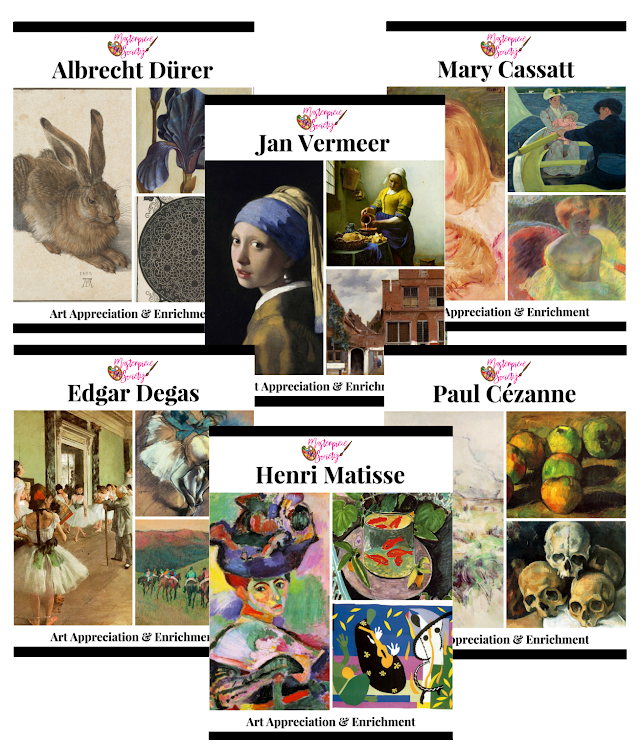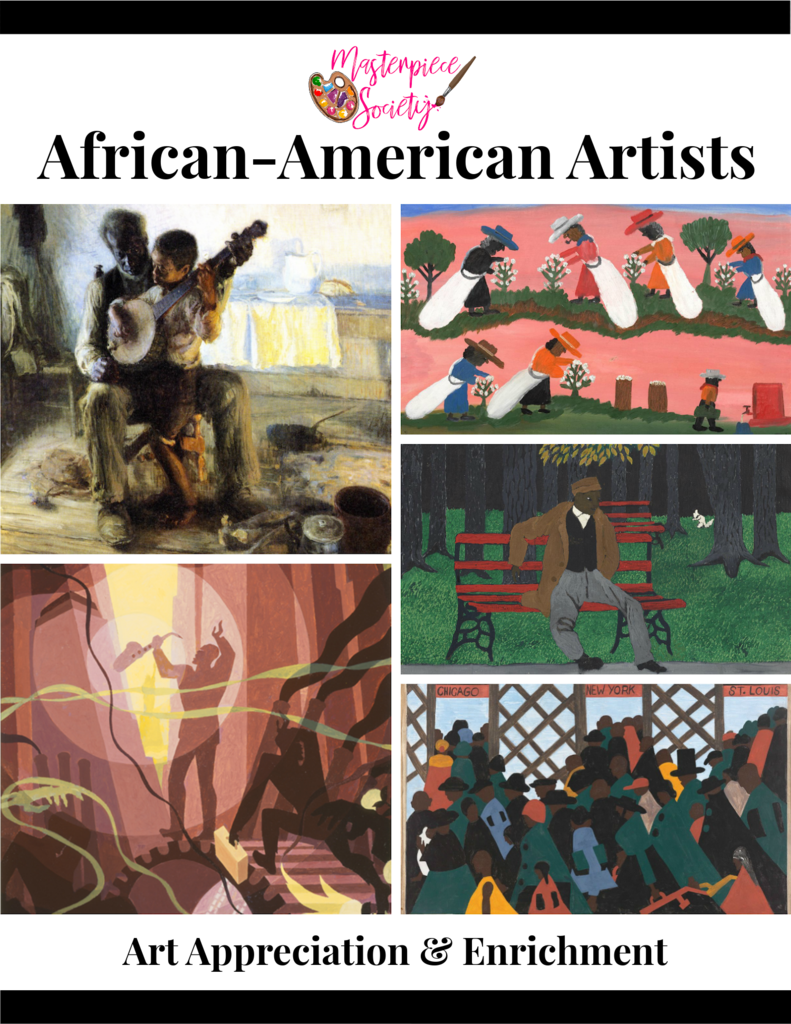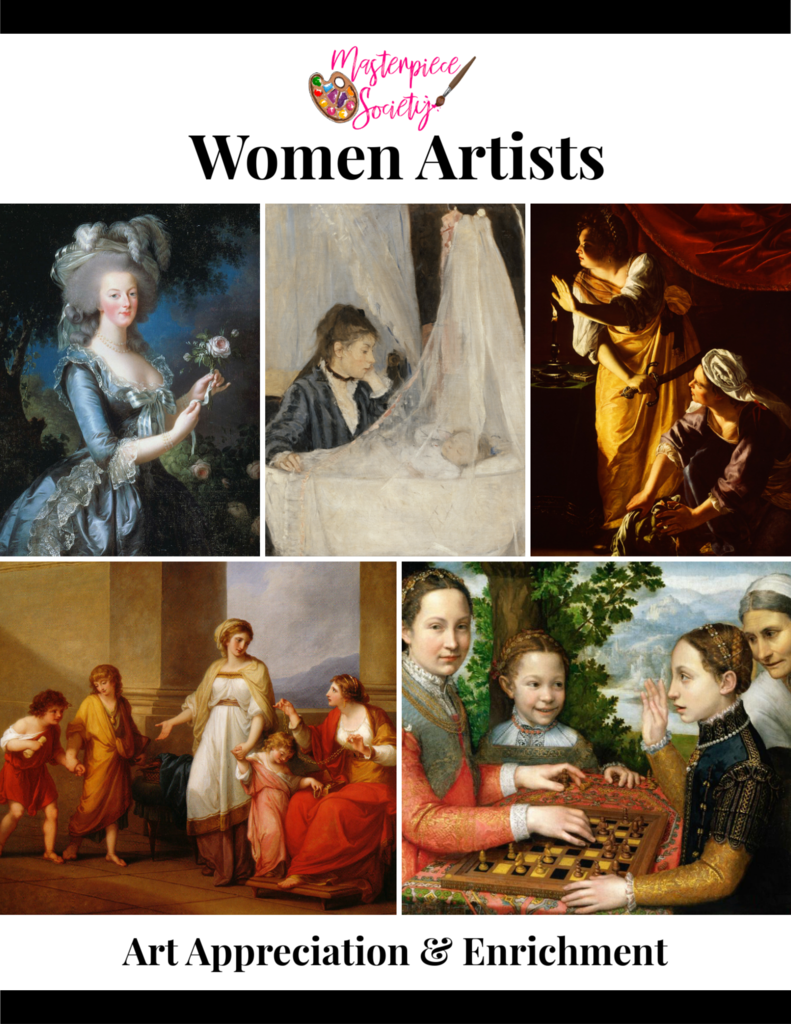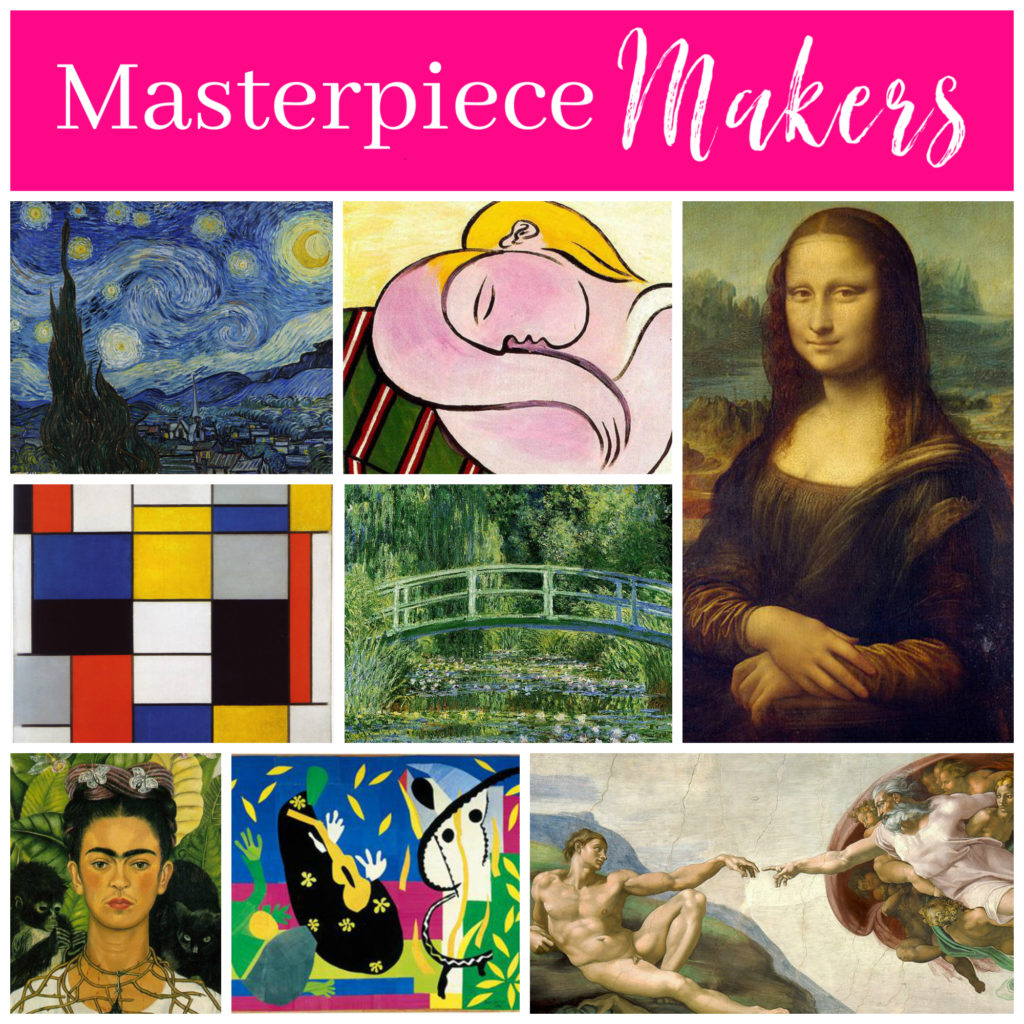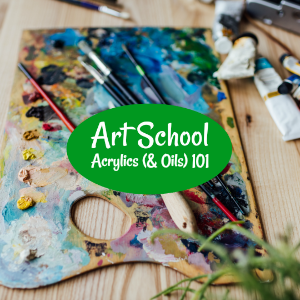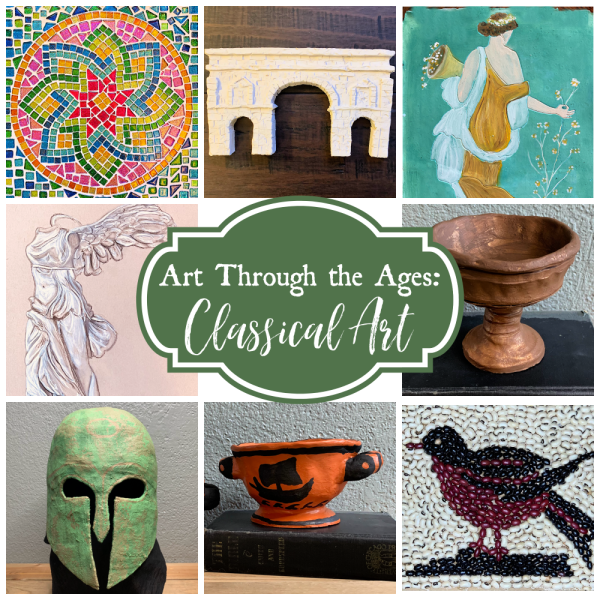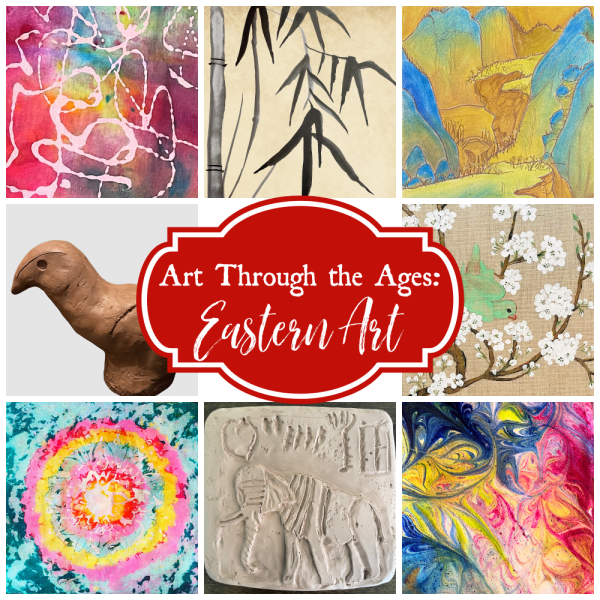Celebrate the life and art of Wassily Kandinsky with this colorful Kandinsky-inspired ink tile art project!
 *This post contains referral links for recommended items; this means I could receive compensation if you take action through one of these links.*
*This post contains referral links for recommended items; this means I could receive compensation if you take action through one of these links.*
Our ink tile art makes a fun abstract art project because it uses Sharpie markers to create the designs and then rubbing alcohol to distort them. And, since Wassily Kandinsky is credited as the pioneer of abstract art, there’s no better artist to celebrate through this lively project!
Wassily Kandinsky-Inspired Ink Tile Art
Ready to get started on this ink tile project? Here are the supplies you’ll need:
Ink Tile Art Supply List
- Assorted Sharpie markers
- Glazed ceramic tiles
- Rubbing alcohol
- Pipette
- Mod Podge (We used the Mod Podge Dishwasher Safe Water-based Sealer)
- Foam brush
- Adhesive cork squares (optional)

I also recommend The Noisy Paint Box and Art Masterclass with Wassily Kandinsky to read along with your project. The Noisy Paint Box is a lovely picture book that sheds light on Kandinsky’s synesthesia and how it impacted him as an artist, while Art Masterclass is a great resource for studying his work, drawing inspiration from it, and allowing it to guide this ink tile project.
Step 1 – Draw and color.
To start your Kandinsky ink tiles, simply have your child use the Sharpies to draw and color a Kandinsky-ish design on the tiles. To find inspiration for the tiles, you can view photos of Kandinsky’s work at WikiArt or use the poster in the back of the Art Masterclass workbook.
 Keep in mind that Kandinsky painted hundreds of abstract pieces, many of them watercolor. Your artist may choose to draw inspiration from any of Kandinsky’s works, but the watercolor paintings provide a perfect muse for these tiles.
Keep in mind that Kandinsky painted hundreds of abstract pieces, many of them watercolor. Your artist may choose to draw inspiration from any of Kandinsky’s works, but the watercolor paintings provide a perfect muse for these tiles.
Step 2 – Add drops of rubbing alcohol.
This step involves rubbing alcohol. As a result, you’ll want to be nearby to closely supervise or even handle this part while your artist watches.
To transform the tiles from Sharpie drawings to the Kandinsky-like blends we find in paintings like Composition No. 4 and Improvisation 9, fill the pipette with the rubbing alcohol and carefully drip the alcohol over the Sharpie ink on the tiles.
 The ink won’t activate immediately, but it will begin to swirl and blend after a few drops. Continue the alcohol dropping process until you blend all the ink strokes.
The ink won’t activate immediately, but it will begin to swirl and blend after a few drops. Continue the alcohol dropping process until you blend all the ink strokes.
Note that you may want to have paper towels on hand to keep the alcohol and ink mixture from running off of the tiles while the ink blends.
Step 3 – Outline and add accents.
After you’ve allowed time for tiles to dry, use the Sharpies to add outlines and accent marks to the tiles.
This is the perfect time to add Kandinsky-like touches to the tiles, along with any defining lines that blurred during the alcohol dripping step.
 Step 4 – Seal and enjoy!
Step 4 – Seal and enjoy!
When you finish the accents and outlines, carefully apply a layer of Mod Podge to the tiles using a foam brush to seal the finished art.
 Once the Mod Podge dries, add the adhesive cork squares to the bottoms if you wish to use them as coasters. If you don’t need a new set of coasters, you can enjoy your Kandinsky ink tile art by using decorative easels to display them.
Once the Mod Podge dries, add the adhesive cork squares to the bottoms if you wish to use them as coasters. If you don’t need a new set of coasters, you can enjoy your Kandinsky ink tile art by using decorative easels to display them.  We would love to see your Kandinsky ink art when you finish. Be sure to include #masterpiecesociety in your caption and tag us when you share it on social media so we don’t miss your brilliant work!
We would love to see your Kandinsky ink art when you finish. Be sure to include #masterpiecesociety in your caption and tag us when you share it on social media so we don’t miss your brilliant work!

Looking for more fun abstract art projects to enjoy with your kids? Check out our Jackson Pollock drip painting. Lastly, if you’re a Masterpiece Society Studio member, hop over to the Art Vault. We’ve got an exclusive members-only abstract art course waiting for you there.






